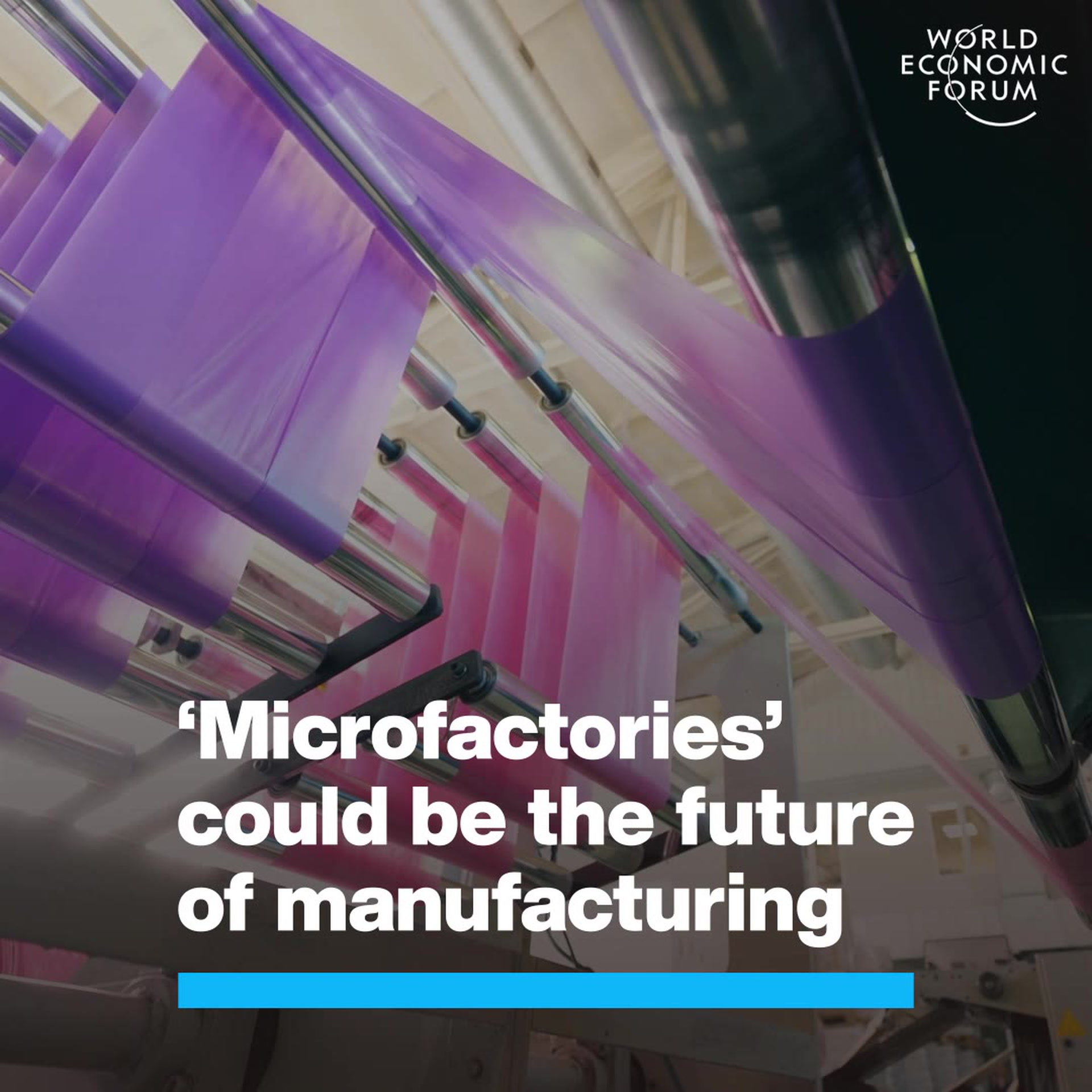A revitalized semiconductor industry will power Europe's digital future

Europe’s digital transformation is interwoven with the revitalization of the semiconductor industry. Image: REUTERS/Florence Lo/Illustration/File Photo

Get involved with our crowdsourced digital platform to deliver impact at scale
Stay up to date:
Advanced Manufacturing and Supply Chains
Listen to the article
- The EU has targeted an increase in its share of the global semiconductor industry from 9% now up to 30% by 2030.
- But to hit this target, it needs to re-think its approach to the manufacturing of microchips and focus on its strengths.
- Evolving regulation in the EU and US is promising, and Europe's healthy academic field mean it is well placed to power its digital advances with home-made microchips.
Europe is undoubtedly on the cusp of a transformation that will shape its future. Technology will power this transformation. Artificial intelligence, pervasive computing, ubiquitous computing and cloud-to-edge infrastructure will be critical in Europe reaching its digitization potential. At the core of these technologies is the semiconductor chip. This technology powers innovative ideas and technology, and it accelerates our understanding of the world around us.
Europe’s digital transformation is interwoven with the revitalization of the semiconductor industry, which was ravaged by global shutdowns, shipping disruptions and geopolitical tensions.
Four ways to build a next-gen semiconductor industry
Europe must revitalize its semiconductor industry to be fit for the future. Fixing this issue is not easy — but it is critical.
The EU has targeted an increase in its share of the global semiconductor industry from 9% now to 30% by 2030. Here are four key steps the bloc can take now to meet that ambitious goal:
1. Double down on collaboration
No single organization or government can transform a global industry alone, so the importance of collaboration cannot be overstated. Open ecosystems and deep partner relationships are required to drive Europe’s semiconductor industry forward.
But manufacturing semiconductors in Europe faces significant cost disadvantages. It can cost 40% to 50% more to operate a semiconductor fabrication plant — known as a “fab” — in Europe compared to other areas of the world, where governments may subsidize manufacturing. Similar subsidies within Europe would certainly help balance the playing field.
The good news is that the EU Chips Act is on its way. There is also an appetite for supporting collaboration across Europe’s value chain, particularly among manufacturers that may be too small to operate globally. In addition to collaboration within Europe and the EMEA region, we should also look across the pond. The recent passing of the U.S. CHIPS and Science Act, set to supercharge the American semiconductor industry, is a welcome step in the right direction. More importantly, it shows coordination on both sides of the Atlantic.
2. Bring the lab and the fab together
One of Europe’s key strengths historically has been laboratory research and academia, but production has taken place at semiconductor fabrication plants elsewhere. We must aim to bring research and manufacturing closer together. By harnessing some of the world’s greatest talent in Europe, we can translate the region’s existing excellence in research into industrial innovation for consumers globally. In fact, Kearney estimates that the overall European economy would experience between €77 billion and €85 billion in additional GDP over the next decade through chip investment alone.
Legislation is the first step to making this a reality. The EU Chips Act is now going through the EU’s legislative procedure and aims to mobilize more than €43 billion of public and private investments to provide manufacturers the tools necessary to thrive in Europe: investment into research and development, building talent pipelines and supporting infrastructure.
3. Have the right skills for the job
Behind every product is people. While investment and innovation are key, without the right talent, they will take Europe only so far.
Europe is one of the most diverse regions in the world. With more than 50 countries, it boasts a talent pool across manufacturing, R&D, software and more. To realize the EU’s ambitions for the technology and manufacturing sectors, the industry must invest in STEM education and develop innovative ways to engage with traditionally underrepresented groups. For a start, this means being committed to D&I efforts with current and prospective employees in the region. Governments, universities and private sector companies must ensure employees have the skills to succeed in the workforce of tomorrow.
This is about more than just chips. Technological innovation is rapidly reshaping lives and careers alike, making skills in Artificial Intelligence, software development and engineering increasingly important across various sectors. It is crucial that no one is left behind as we adapt to this new landscape.
4. Prioritize sustainability in the semiconductor industry
It is no secret that the chip industry is energy-intensive, and work is needed to ensure the manufacturing process aligns with Europe’s green transition and goal of net-zero carbon emissions by 2050.
Europe must rebuild its chip industry in a greener, sustainable way, ensuring that the reconstruction of this industry does not come at the cost of the climate. There are several examples to draw from: from water conservation, recycling and reclaiming projects, to using renewable energy for manufacturing operations, and working toward achieving zero total waste to landfills.
Working with suppliers can help European fabs achieve this goal. Partnerships can help reduce supply chain greenhouse gas emissions to 30% by 2030 — lower than they would be without investment and action. In addition, working with industry partners and customers can support efforts to increase energy efficiency and lower the total carbon footprint of the technology industry.
Building sustainability into the manufacturing process is a vital stepping stone for sustainable manufacturing and one that will usher us through the Fourth Industrial Revolution without serious and lasting consequences for our planet.
Toward Europe's digital future
Making Europe’s semiconductor industry and supply chains resilient and sustainable won’t be simple or quick. But it is necessary for Europe to realize its ambitions of remaining a leading technology powerhouse, while also boosting its GDP.
They say the best time to start something is yesterday, and the second-best time is today. Some companies, such as Intel, are readying themselves for the challenge and preparing to bolster EMEA’s digital sovereignty and make this region the home to a sustainable, profitable and cutting-edge next-generation semiconductor ecosystem.
Don't miss any update on this topic
Create a free account and access your personalized content collection with our latest publications and analyses.
License and Republishing
World Economic Forum articles may be republished in accordance with the Creative Commons Attribution-NonCommercial-NoDerivatives 4.0 International Public License, and in accordance with our Terms of Use.
The views expressed in this article are those of the author alone and not the World Economic Forum.
Related topics:
The Agenda Weekly
A weekly update of the most important issues driving the global agenda
You can unsubscribe at any time using the link in our emails. For more details, review our privacy policy.
More on Manufacturing and Value ChainsSee all
Andre S. Yoon and Kyoung Yeon Kim
April 23, 2024
Andrea Willige
March 19, 2024
Raimund Klein
March 4, 2024






